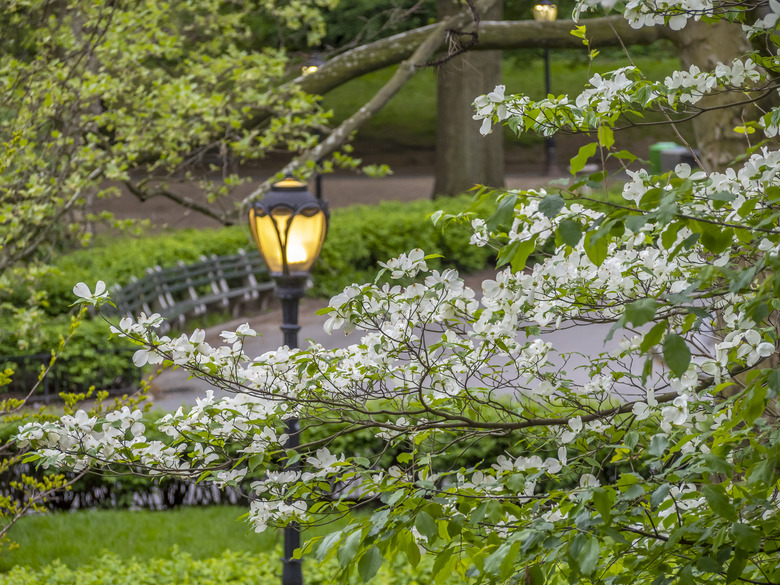When Do Dogwood Trees Bloom?
We may receive a commission on purchases made from links.
Walk into the woods in early spring and the magic of the flowering dogwood will fill your senses. Among the earliest trees to offer blooms, the dogwood tree's display is extremely appealing since the elegant white flowers appear on bare branches. Spring bloom is only one of many ornamental attributes of these lovely trees. Anyone considering adding a small, flowering tree to the landscape would do well to consider the dogwood.
Tip
Flowering dogwood trees bloom in early spring, generally starting in March or April.
Meet the Flowering Dogwood Tree
Meet the Flowering Dogwood Tree
Flowering dogwood trees (Cornus florida) make the short list of trees that provide four seasons of beauty: spring blooms, lush summer foliage, fall color and berries, and elegant bark in winter. This makes these slow-growing trees ideal candidates for landscape trees that double as dappled shade trees in summer.
The dogwood show is perhaps most spectacular in spring. Since dogwood trees are deciduous, the branches are bare all winter long. They remain bare as the ivory blooms appear in early spring on bare dogwood branches. The beloved dogwood "flowers" have four huge ivory petals with a yellow center. Though it does not diminish their beauty, what you see as "flower petals" on the dogwood are technically bracts (modified leaves) that are grouped around the true flowers — small, yellow, and tightly clustered.
Enjoy Four Seasons of Beauty
Enjoy Four Seasons of Beauty
The dogwood bloom is magnificent, but when the "petals" fall, there are still more seasons of beauty to enjoy. The leaves will start to appear on the dogwood trees at the end of the flower display. The foliage is also lovely, simple and untoothed with distinctive visible veins curving to the leaf margins. In late spring, the leaves are small, but they grow in and mature over summer.
Autumn brings another round in the ornamental show of the dogwood. These same leaves, so green in summer, turn burgundy at summer's end, creating a bright and beautiful reddish-purple. At the same time, the dogwood berries ripen. They are actually drupes, a type of small, fleshy stone fruit containing multiple seeds. The dogwood's drupes are tart and mildly toxic. While humans appreciate the bright red berries as decoration, wild birds rely on them for nurture.
When the leaves have wafted to the ground in early winter, the full beauty of the dogwood trunk and branches is revealed. The bark of the flowering dogwood is the color of mahogany: a dark reddish-brown, deeply and distinctively checkered. The rounded shape of the trunk and branches is also deeply pleasing. As landscape trees, they require little, if any, pruning to enhance the natural form of the tree.
Other Dogwood Varieties
Other Dogwood Varieties
Some 40 different species are found in the Cornus genus, some shrubs and others trees. The more common dogwood trees include the kousa dogwood (Cornus kousa) with yellow-green spring flowers and the Pacific dogwood (Cornus nuttallii) with large, white spring flowers. All of these trees bloom in March and April across the United States, although the exact flowering period may vary geographically.
